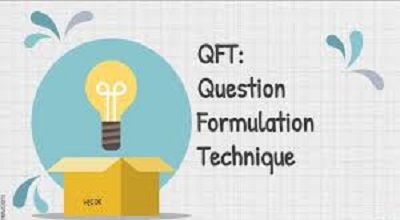Question Formulation Technique
Question Formulation Technique: According to my educational researchers, QFT is a structured method for generating and improving questions, developed by the Right Question Institute. It involves six steps: designing a question focus, introducing the rules, producing questions, improving questions, prioritizing questions, and planning the next steps.
Some of the latest developments and applications of QFT in 2024 are:
A new online course offered by Harvard Graduate School of Education, called “Questions at the Core: Extending the Question Formulation Technique to Sustain an Inquiry-Based Culture in Schools”. This course aims to help educators use QFT to create a deeper culture of inquiry in their classrooms, schools, districts, or organizations.
A new research paper published by the Right Question Institute called “The Question Formulation Technique for Research”. This paper provides a detailed guide on how to use QFT for conducting research projects, from defining a topic to presenting findings.
A new article published by Edutopia called “How to Use the Question Formulation Technique in the Classroom”. This article shares some tips and examples on how to implement QFT in different subject areas and grade levels.
Extra tips and techniques for effective question formulation:
- Clarity: Formulate your question clearly and concisely. Avoid ambiguity to ensure that the respondent understands what you’re asking.
- Open-ended vs. Closed-ended: Consider whether you want a broad, open-ended response or a specific, closed-ended answer. Open-ended questions encourage more detailed responses, while closed-ended questions typically result in short, specific answers.
- Avoiding leading questions: Be mindful of not including any information or bias in your question that might influence the respondent’s answer. Keep your questions neutral.
- Specificity: Make your questions specific and focused. Vague or overly general questions may lead to unclear or unhelpful responses.
- Consider the respondent’s perspective: Frame your questions in a way that is relevant and understandable to the person or group you are addressing. Consider their knowledge and background.
More here….
- Logical sequence: If you are asking a series of questions, ensure they follow a logical sequence. Start with more general questions before moving to more specific ones.
- Relevance: Ensure that your questions are directly related to the topic or information you are seeking. Irrelevant questions may lead to confusion or frustration.
- Use of language: Be mindful of the language you use. Avoid jargon or technical terms that may be unfamiliar to your audience unless it’s appropriate for the context.
- Balance: If you’re asking a series of questions, strive for a balance between different types of questions (open-ended and closed-ended) to gather comprehensive information.
- Test your questions: Before presenting your questions to others, review and test them to ensure clarity and effectiveness. This can help you identify any potential issues with the wording or structure.
Summary
In summary, effective question formulation depends on the specific situation, audience, and the information you’re seeking. It’s often a good idea to adapt your approach based on the context in which you are asking questions.
